Q1. What is the Objective of FWSAS?
A1. The objective of FWSAS is as follows:
The primary objective of a Fire Water System Adequacy Study (FWSAS) is to assess the effectiveness, reliability, and sufficiency of a facility’s fire water system in combating fires, ensuring compliance, and identifying areas for improvement.
Q2. What is the Scope of FWSAS?
A2. The Scope of FWSAS is as follows:
The scope of a Fire Water System Adequacy Study (FWSAS) typically includes:
- System Assessment: Reviewing the entire fire water setup to ensure everything is functioning as intended.
- Risk Analysis: Identifying potential fire hazards and evaluating their likelihood and impact.
- Compliance Verification: Checking if the system meets legal and regulatory standards.
- Capacity and Performance Evaluation: Determining if the system can handle different fire scenarios and how well it performs.
- Reliability and Resilience Assessment: Assessing how dependable the system is under normal and emergency conditions.
- Response Time Analysis: Evaluating how quickly firefighters can access and use the system during emergencies.
- Recommendations: Suggesting ways to improve the system’s effectiveness, reliability, and compliance.
- Cost-Benefit Analysis: Weighing the costs of improvements against the potential benefits in terms of risk reduction and property protection.
- Documentation and Reporting: Summarizing findings, analyses, and recommendations in a report for stakeholders.
Q3. What reference is commonly used for FWSAS?
A3. The commonly used reference for FWSAS is as follows:
- NFPA-72- Provides the latest safety provisions to meet society’s changing fire detection, signaling, and emergency communications demands. In addition to the core focus on fire alarm systems, the Code includes requirements for mass notification systems used for weather emergencies; terrorist events; biological, chemical, and nuclear emergencies; and other threats.
- Fire Protection Manual, Tariff Advisory Committee, twelfth edition
- NFPA 13 – Standard for Installation of Sprinkler System and NFPA-20 – Standard for Installation of Stationary Pumps for Fire Protection
- IS 2190:1992 revised in 2010
- NFPA 101- life safety, Eleventh Edition
- NBC-2016 – SP 7
Q4. Why is an FWSAS necessary?
A4. FWSAS is necessary in following ways:
An FWSAS is necessary to evaluate the effectiveness, reliability, and compliance of the fire water system, identify potential deficiencies, and recommend improvements to enhance fire safety.
Q5. What is the methodology for FWSAS?
A5. The methodology for FWSAS is as follows
- Data collection
- Document Review
- Calculations
- Draft Report Preparation
- Comments incorporation along with CRS (Comment Resolution Sheet)
- Final Report Preparation

Q6. What are the steps for the FWSAS?
A6. Steps for FWSAS is as follows
- To evaluate adequacy of the fire hydrant / monitor / sprinkler system / pumping system as per fire protection manual TAC-12th Edition / NFPA-13/20
- Adequacy Study for Fire Protection System as per TAC
- After detailed study identification of hazards / hazardous areas shall be carried out and design fire protection systems shall be carried out.
- The design will indicate the requirement of Fire Fighting Facilities as per TAC/ Indian standard vis-à-vis availability in tabular form highlighting the facilities like:
- Hydrant network.
- Fire pump.
- Water storage capacity.
- Fixed Fire Fighting Facilities.
- Fire Alarm & Detection System.
- Sources of Fire & ignition hazard.
- Portable & Mobile Fire Fighting.
- Location of Fire Station with regard to process unit
- Adequacy of Fire Fighting Personnel strength & their competencies
- Training needs for Fire Personnel
- Automatic detection & Fire Suppression system for Control rooms
A critical assessment shall be done and assess the requirement after reviewing the layout and present facility, if any.
- Fire Water Requirement as per relevant TAC
Our methodology to determine the Fire water requirement shall be for fighting two (2) major simultaneous fire scenarios, considering the maximum hazard. Fire Water calculation shall be carried out as per TAC. This shall include:
- Total Fire water demand design calculation for individual units areas.
- Fire water design for fighting two major fires considering the maximum hazard. (Not Applicable in case of TAC Guidelines Followed)
- Computation of design flow rate.
- Adequacy Study for water pumping requirement
Based on design calculation, we shall give the detail of pumping facilities required.
- Total Fire pumps required
- Pump capacity & Head
- Numbers of working Pumps
- Numbers of Stand by Pump
- Power required to drive the pump
- Numbers of engine driven & Motor driven pump
- Total Numbers of Jockey pumps required.
- Pump mode of operation
- Type of pumps required
- Number of storage Tanks required with capacity
- Type of Storage Tanks required
- Source of water and water replenishment rate
- Adequacy Study for Hydrant Network, piping layout
- This shall include the following:
- Assess present existing design of network for its adequacy if any.
- Define size of fire water network required to meet the design flow rate.
- Carry out pressure drop calculation of the entire network showing pressure availability at nodal points.
- Defining the positioning of the isolation valve in the hydrant network.
- Compare the existing layout of the network, if any, vis-à-vis actual network required showing the extension/modification which are required to be done in order to meet the fire water flow rate requirement.
- Provide pressure drop calculation in summary sheet in Tabular form.
- Suggest numbers of hydrant & Monitors with capacity required to be installed in the hydrant network and in the unit areas.
- Suggest types of Monitors required for unit areas protection.
- Suggest type of piping layout required for the hydrant network.
- Suggestion for Fire Protection facilities required for Storage tanks
- Adequacy Study for water spray & sprinkler system.
- To evaluate adequacy of the fire extinguisher based on IS 2190:1992, revised in 2010
- To check / evaluate plant layout report as per NBC-2016 – SP 7
- Revaluation of Plant layout with respect to Fire Risk Assessment
- This shall include
- Assessment and study the layout of unit area with regard to inter distance from unit to units, unit equipment, tanks and other building & blocks in line with Standard / Guideline.
- Assessment of the potential hazard and risk in units with respect to Fire Hazard and their categorization.
- Carrying out the study of present layout of unit, blocks and facilities and assess for its safe distance with regard to fire hazard.
- Carrying out the Study of Road and approaches for its adequacy inside the premises
- Suggestion for change in layouts which are possible or suggest additional measures to be taken wherever changes are not possible in the layout in order to minimize Fire Risk.
- Submission of complete layout plan showing the existing facilities vis-à-vis modification/ addition/ alteration which are required and clearly marked in the lay out drawing.
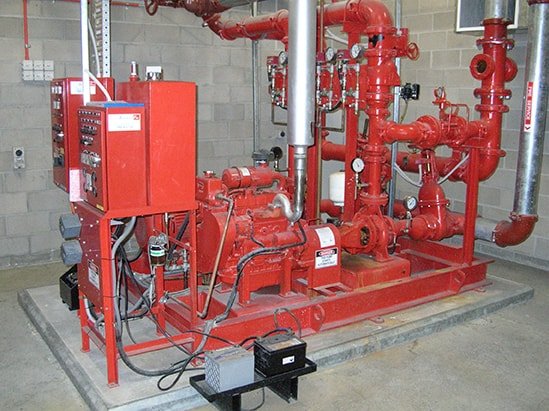
- To check / evaluate life safety requirement as per NFPA-101 Eleventh Edition
- Life Safety Requirement
- This shall include:
- Carry out Assessment of PPEs required for life safety.
- Carry out Assessment of work Area & occupation of each unit and give type of hazard existing which are threat for life and identified hazard to be presented in tabular form.
- Carry out Assessment of emergency exit in Units, Building, Control Room and other blocks located inside the company with regards to its position.
- Suggestion on types of emergency exit, rescue equipment, which are required for saving life.
- Giving List of life safety requirement in tabular form.
- Shall include any other requirement as per Standard/ Guideline and others requirements not covered but are essential from lifesaving point of view
- To check / evaluate mobile firefighting report as per fire protection manual TAC-12th Edition
- Define Mobile Fire Fighting Vehicles Other Mobile Appliances & Fire Fighting Chemicals
- This shall include:
- Requirement of number of Fire Vehicles and other Mobile Fire Fighting Equipment vis-à-vis existing against standard/guideline
- Suggestion for Type of Fire vehicles required and its quantity.
- Suggestion on the capacity of Fire Vehicle and extinguishing media quantity to be stored in the mobile firefighting equipment.
- Suggestion minimum numbers of vehicle which can be required during 2 major fire situations.
- Shall cover any other parameters pertaining to mobile firefighting equipment and detail out the same.
- Suggestion on the replacement periodicity of mobile firefighting equipment as per Standard/guideline or Government directive related to Fire Fighting Equipment and Mobile Fire Fighting Equipment & appliances.
- Assessment of quantity of Foam Compound & Type required to be stored based on Calculation as per Guideline and suggest minimum inventory to be maintained
- Assessment of Quantity of Dry Chemical Powder & Types to be stored based on Risk Evaluation and guideline and suggest minimum inventory to be maintained.
- To check / evaluate fire alarm system report as per NBC-2005 Rev.2
- Adequacy Study for Fire Alarm System Design.
Q7. What are the documents required for the FWSAS?
A7. The documents required for the FWSAS include the following:
- As-Built Drawings: Blueprints showing the layout and components of the fire water system.
- Water Supply Information: Documentation on where the water for the system comes from.
- System Design Specifications: Technical details and requirements for system components.
- Equipment Manuals: Instructions and specifications for system equipment.
- Regulatory Standards and Codes: Rules and guidelines governing fire safety systems.
- Maintenance Records: Logs of upkeep and inspections done on the system.
- Emergency Response Plans: Procedures for dealing with fire incidents.
- Historical Incident Reports: Records of past fires and their outcomes.
- Facility Layout and Hazard Analysis: Diagrams showing facility layout and potential fire risks.
- Utility Information: Details on utilities affecting the fire water system.
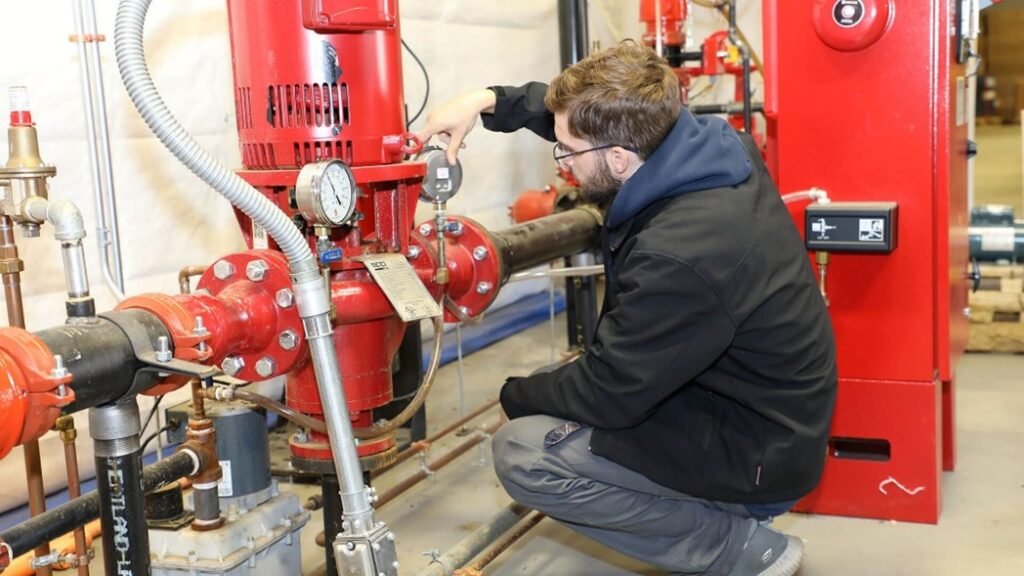
Q8. What types of facilities require an FWSAS?
A8. Facilities that require FWSAS are as follows:
Any facility with a fire water system, such as industrial plants, commercial buildings, warehouses, manufacturing facilities, hospitals, educational institutions, and high-rise structures, may require an FWSAS to ensure adequate fire protection measures are in place.
Q9. What are documents deliverables for FWSAS Study?
A9. The documents deliverables for FWSAS are as follows
- Executive Summary
- Document Review
- FWSAS Methodology
- Technical Drawings and Diagrams
- Compliance Documentation
- Comments Resolving sheets
- Reference
- List of tables
- List of appendix
Q10. What information does the executive summary of a FWSAS Report typically include?
A10. Executive Summary of a FWSAS Report typically include the following information:
The executive summary of a Fire Water System Adequacy Study (FWSAS) Report provides a overview of the study’s objectives, methodology, key findings, and recommendations.
It typically includes:
- Purpose and Scope: A brief statement outlining the purpose and scope of the FWSAS, including the objectives of the study and the facilities or systems assessed.
- Background: A summary of the background information relevant to the study, such as the type of facility, its operations, fire protection measures in place, and any previous fire incidents or concerns.
- Methodology: An overview of the approach and methodology used to conduct the study, including data collection methods, analysis techniques, and evaluation criteria.
- Findings: Summary of the key findings and observations from the assessment of the fire water system, including strengths, weaknesses, deficiencies, and areas for improvement identified during the study.
- Recommendations: Summary of the recommendations for enhancing the effectiveness, reliability, and compliance of the fire water system, including prioritization, estimated costs, and implementation timelines.
- Conclusions: Summary of the main conclusions drawn from the study, including the overall adequacy of the fire water system, compliance with regulations, and any significant risks or concerns identified.
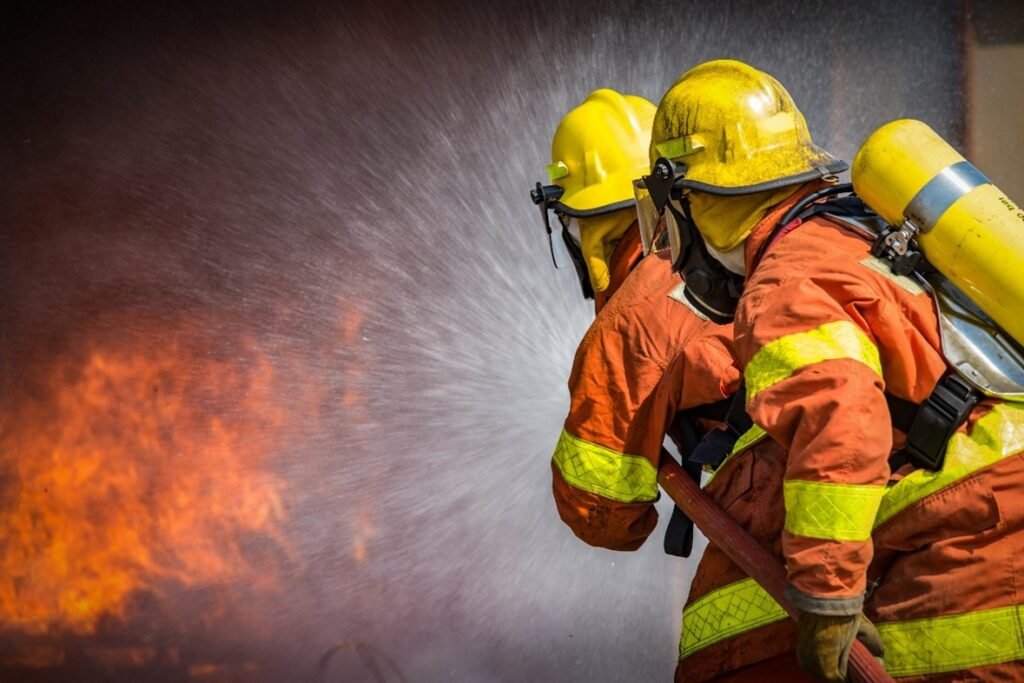
Q11. When should an FWSAS be performed?
A11. Frequency of conducting FWSAS is as follows:
An FWSAS should be performed periodically, especially when there are significant changes to the facility, such as expansion, renovation, or changes in occupancy, to ensure ongoing compliance and effectiveness of the fire water system.
Q12. What is the Comment Resolution Sheet?
A12. The meaning of Comment Resolution Sheet (CRS) is as follows:
A comment resolution sheet is a document used to track and address comments, feedback, or issues raised during a review process, audit, or evaluation.
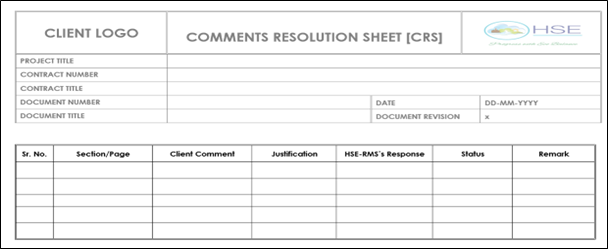
DISCLAIMER
This Blog is provided solely for informational and educational purposes. It is advisable to verify all information presented and consult with appropriate experts or professionals before making any decisions or implementing any strategies based on the content of this blog. HSE Risk Management Services Pvt. Ltd. accept no liability for any actions taken or not taken based on the information provided herein.
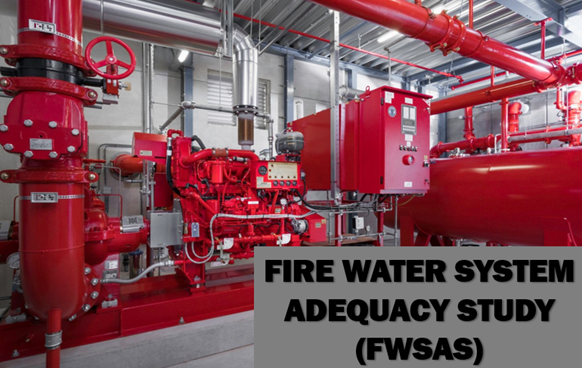
Leave a Reply